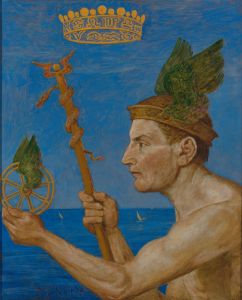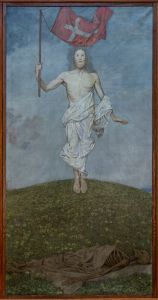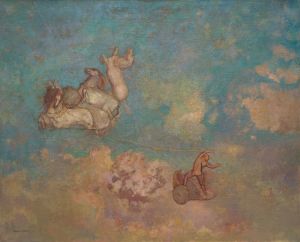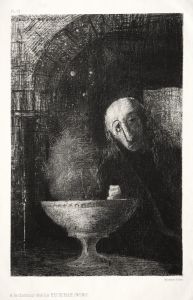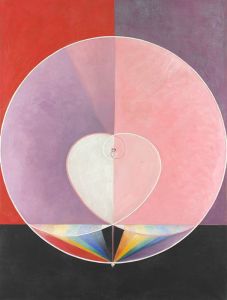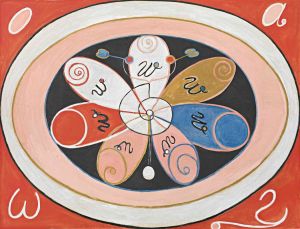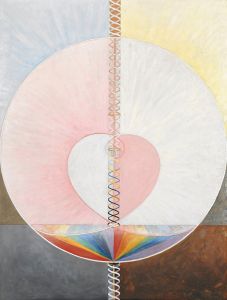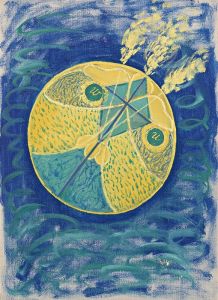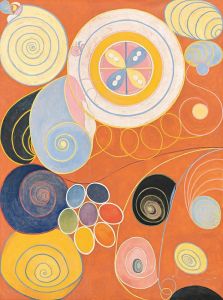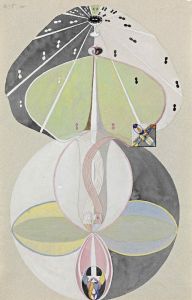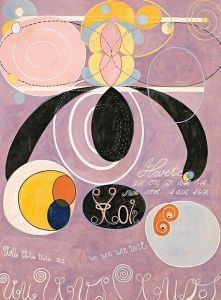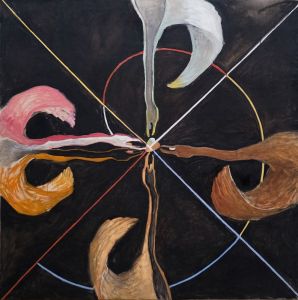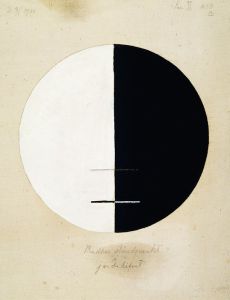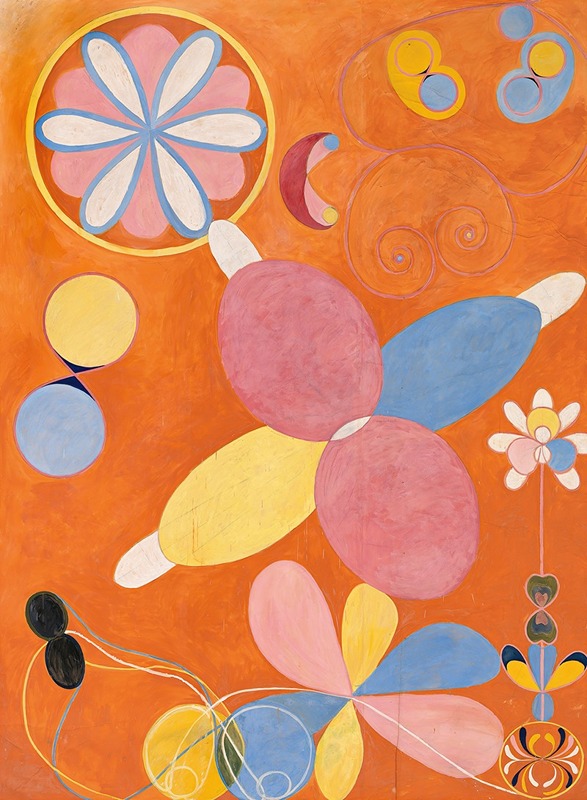
The Ten Largest, No. 4, Youth
A hand-painted replica of Hilma af Klint’s masterpiece The Ten Largest, No. 4, Youth, meticulously crafted by professional artists to capture the true essence of the original. Each piece is created with museum-quality canvas and rare mineral pigments, carefully painted by experienced artists with delicate brushstrokes and rich, layered colors to perfectly recreate the texture of the original artwork. Unlike machine-printed reproductions, this hand-painted version brings the painting to life, infused with the artist’s emotions and skill in every stroke. Whether for personal collection or home decoration, it instantly elevates the artistic atmosphere of any space.
"The Ten Largest, No. 4, Youth" is a significant work by Swedish artist Hilma af Klint, created in 1907 as part of her groundbreaking series "The Ten Largest." This series is a component of a larger body of work known as "Paintings for the Temple," which af Klint produced between 1906 and 1915. The series consists of ten large-scale paintings, each representing different stages of human life. "No. 4, Youth" specifically symbolizes the phase of youth, capturing the vibrancy and dynamism associated with this period.
Hilma af Klint was a pioneer of abstract art, and her work predated the recognized advent of abstract painting by artists such as Wassily Kandinsky, Kazimir Malevich, and Piet Mondrian. Despite her early contributions to abstract art, af Klint's work remained largely unknown until decades after her death, as she stipulated that her paintings should not be shown until at least 20 years after her passing. This decision was influenced by her belief that the world was not yet ready to understand her work.
"The Ten Largest, No. 4, Youth" is characterized by its bold use of color, form, and symbolism. The painting measures approximately 3.28 meters by 2.40 meters, making it one of the largest in the series. The composition is dominated by swirling organic shapes, vibrant colors, and symbolic motifs that reflect af Klint's interest in spirituality, theosophy, and the natural world. The use of bright colors and dynamic forms in "Youth" conveys a sense of growth, energy, and potential, which are emblematic of the youthful stage of life.
Af Klint's work was deeply influenced by her spiritual beliefs and her involvement with the spiritualist group known as "The Five," which consisted of women who conducted séances and explored mystical themes. These spiritual practices informed her artistic process, as she often described her work as being guided by higher powers. This spiritual dimension is evident in "The Ten Largest," where abstract forms and symbols are used to convey metaphysical concepts.
The rediscovery of Hilma af Klint's work in the late 20th and early 21st centuries has led to a reevaluation of her place in art history. Exhibitions of her work, such as the 2013 retrospective at the Moderna Museet in Stockholm and the 2018-2019 exhibition at the Solomon R. Guggenheim Museum in New York, have brought her contributions to abstract art to a wider audience. These exhibitions have highlighted her innovative approach and her role as a forerunner of abstract art, challenging the traditional narrative that places the origins of abstraction solely in the hands of male artists.
"The Ten Largest, No. 4, Youth" exemplifies Hilma af Klint's unique artistic vision and her ability to convey complex spiritual and philosophical ideas through abstract forms. Her work continues to inspire and influence contemporary artists and scholars, contributing to ongoing discussions about the nature of abstraction and the role of women in art history.





